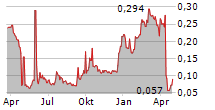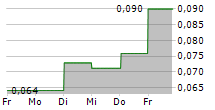NextCell Pharma ("the company" or "NextCell") has published an interview where the analyst Filip Einarsson from Redeye, who currently covering NextCell, discusses with Mathias questions regarding the latest results from ProTrans-YOUNG and NextCell's participation at the International Diabetes Congress in Bangkok 7-10 April. The interview is now available with English subtitles on NextCell's website
https://www.nextcellpharma.com/nyheterforetagspresentationer
Transcript from the interview, non-official translation and in part:
- You published the subgroup analysis yesterday, and it was received rather lukewarmly by shareholders, to say the least. Could you explain a bit more about why there was no observed difference between the active ProTrans-treated group and the placebo group in this dataset?
Yes, there are several factors that likely contributed. We are intervening very early in the disease progression, enrolling patients within a maximum of six months after diagnosis. In practice, this has ranged from four to just over twenty weeks post-diagnosis.
Many of them are still in the honeymoon phase and have high insulin levels. That's precisely what we are targeting - we want to intervene as early as possible, when there is still significant insulin production to preserve.
This honeymoon phase, or remission phase as it's often called, is a period following diagnosis that can be seen as a temporary reprieve in the disease process where immune activity decreases, allowing the beta cells to produce insulin, meaning patients in this phase have good blood sugar control and require significantly less insulin. But this phase eventually ends.
In the age group we've enrolled here, 12-18 years, the remission phase typically lasts six to twelve months, but there is a great deal of variation - and that's exactly what we're seeing in our patient group, especially in the placebo group.
Some patients had a short or negligible honeymoon phase, while others remain actively in this stage of the disease. With such large variations, it becomes very difficult to demonstrate an effect on a group level. In the placebo group, for instance, we have three patients with elevated insulin production. Unfortunately, they will undoubtedly lose this over time, and that's when we expect to see significant differences.
What occurs during the remission phase is exactly what we aim to achieve with our treatment - to halt the autoimmune attack. When untreated patients begin to lose their insulin production, we hope that our treatment will keep patients in the remission phase, potentially as long as we've seen in adults - at least five years, and hopefully for life.
What we can already say is that the patients in the ProTrans group appear more stable. And this is very much in line with what we've seen in adult studies, where we also had a more homogeneous population treated with ProTrans compared to placebo.
In this first readout, placebo patients had on average seventy-three percent of their insulin production remaining. The expected progression for this age group should be somewhere between 35 and 50 percent, so we're seeing very high levels in this study. But most importantly, it's a matter of time.
- The stock market viewed the results as a disappointment, but do you consider the results disappointing?
No, it's not a disappointment. In fact, this is exactly when we want to treat patients. It rather suggests that our timing is right - we want to intervene this early to help patients retain as much insulin production as possible, for as long as possible. To keep them in the remission phase for as long as we can.
We're not seeing a difference because, currently, there's no active autoimmune activity. We're dealing with a low-activity disease state that will eventually progress, but the fact that we don't see a difference during the remission phase is not something I'm disappointed about.
We also have robust data from the adult study, so I'm confident that the treatment effect will appear. Looking at the next age group, 7-11 years, we're dealing with a more aggressive and faster disease progression.
There, we are likely to observe a treatment effect already after twelve months, as the expected honeymoon phase is shorter and with less variation - it usually lasts only three to six months. So, no - this is not a disappointment. Perhaps the readout should have been scheduled later, to avoid making the market nervous.
- You touched on the adult studies, but could you go into more detail on how the results differ from those seen in adult trials?
In the adult study, we included patients within two years of diagnosis. That's significantly longer than the six months used in the paediatric study.
We are seeing long-lasting treatment effects that are robust, where nearly the entire patient population is in remission, and we have five-year data following a single infusion of ProTrans - with patients retaining almost sixtyper cent of their insulin production after five years.
We also have six-year data after two infusions, where two out of three patients actually had increased insulin production. By identifying patients this early, we hope to preserve the high insulin levels they still have.
The adolescents clearly start at higher levels than many of the adults in these studies. We have very stable and robust data from previous studies, and we're seeing clear signs that this will work in adolescents too.
- Could you tell us a bit more about what these results mean for the company's long-term strategy, and perhaps the road ahead for the younger age group whose readout is expected next year?
Professor Per-Ola Carlsson and his study team are now in the process of enrolling the last patients in the younger age group. Before the summer, treatment will likely be completed, which means we will have one-year data after summer 2026.
Our long-term strategy remains unchanged. We aim to take ProTrans through phase III together with a partner, to treat the full age range of 7 to 40 years. No changes.
Additionally, we have a platform technology that gives us the opportunity to expand our clinical trial programme to include more indications. We see great value in this collaborative approach with academia, both within type 1 diabetes and potentially in other indications as well.
- You mentioned Per-Ola Carlsson. Have you received any comments from him on the outcome?
No, this is not a statistical or scientific analysis - it was an administrative subgroup analysis to support our planning and dialogue with potential partners. Our permit from the medical products agency states that we should not inform the investigators of the results or go into detail.
However, since we are a public company, we were required to issue a press release regardless. But we have not had any in-depth dialogue with the investigator.
- Let's turn briefly to the financial side of the company. You have an outstanding warrant, and of course the conditions for that may now shift somewhat. What happens if the outcome here does not meet your expectations?**
We are on a solid financial foundation, with very low operating costs and a strong scientific programme.
If you consider the fact that we are running five clinical trials with ProTrans, that places us in a truly unique position.
We also have our subsidiaries - we are not a single-focus company. We have Cellaviva, which has generated revenue since 2015 and is the largest stem cell bank in the Nordics. And we are in the process of launching our quality analysis company, QVance, where we hope to onboard clients already by the end of the year.
We have breadth, and that gives us significant resilience and flexibility, even in a more challenging financial climate.
For more information about NextCell Pharma, please contact
Mathias Svahn, CEO
Patrik Fagerholm, CFO
Tel: +46 8 735 55 95
E-mail: info@nextcellpharma.com
Website:www.nextcellpharma.com
Linkedin: https://www.linkedin.com/NextCell-Pharma
Twitter: https://twitter.com/NextCellPharma
For more information about Cellaviva, please contact
Sofie Falk Jansson, CEO Cellaviva AB
Tel: +46 8 735 20 10
E-mail: info@cellaviva.se
Website:www.cellaviva.se
Facebook: https://www.facebook.com/cellavivasverige
Instagram: https://www,instagram.com/cellaviva
Certified Adviser
The company's shares are listed on the Nasdaq First North Growth Market.
RedEye AB is assigned as Certified Adviser.
About NextCell Pharma AB
NextCell is a cell therapy company in Phase II trials with the drug candidate ProTrans for the treatment of type 1 diabetes. The focus is to obtain market approval of ProTrans via a phase III trial. In addition to type 1 diabetes. NextCell owns Cellaviva AB, Scandinavia's largest private stem cell bank licensed by the Swedish Health Authority (IVO) to preserve and store stem cells from umbilical cord blood and umbilical cord tissue for family use. NextCell also owns QVance which will offer quality control analytics for advanced therapy developers. Furthermore, NextCell owns 8.5% in FamicordTX, a CAR-T start-up in oncology.


